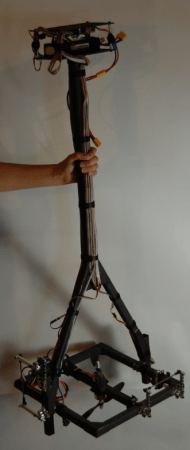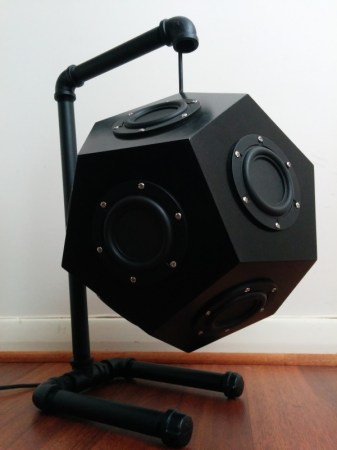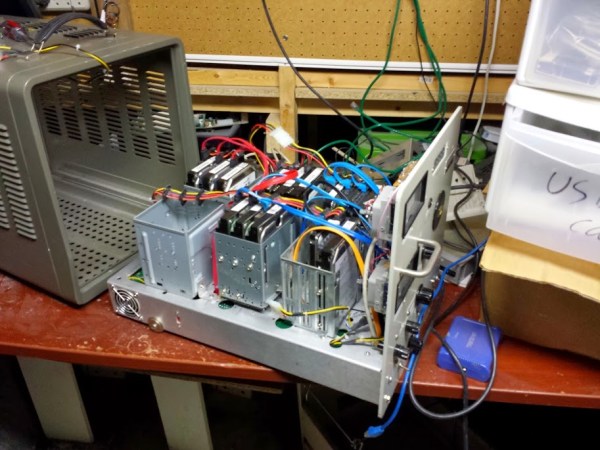An extremely common project for a control systems class is the inverted pendulum. Basically, it’s a robot mounted on a linear rail, a hinge, and a pendulum sticking straight up in the air. Get your algorithms right, and you have a pendulum that seemingly resists the inexorable pull of gravity and a great understanding of how Segways, balancing robots, and quadcopters work.
[zakowy] is taking this to the next level with his entry to The Hackaday Prize. It’s an inverted pendulum with two counter-rotating propellers in a gimballed fan, and the most unstable UAV design we’ve ever seen.
The mechanics of the build consist of a carbon and epoxy frame, with a motor mount that can move in the X and Y axes. This mount holds two brushless motors and is actuated with rather large pitch and roll servos. The electronics consist of the usual suite of sensors found in a quadcopter – gyros, accelerometers, magnetometers, and a barometric altimeter. Everything is controlled by an Arduino Due, getting commands from an RC receiver and sending telemetry back to a computer
[zakowy]’s project didn’t make the cut for the quarterfinalist selection, but he is undeterred. He’s building this strange contraption because he can, not because we’re dangling some great prizes in front of his nose. Right now, [zakowy] is working on a testing rig. This thing will fly, make no mistakes about that.
Videos available below.
 This project is an official entry to The Hackaday Prize that sadly didn’t make the quarterfinal selection. It’s still a great project, and worthy of a Hackaday post on its own.
This project is an official entry to The Hackaday Prize that sadly didn’t make the quarterfinal selection. It’s still a great project, and worthy of a Hackaday post on its own.
Continue reading “Extrinsic Motivation: And You Thought Inverted Pendulums Were Hard”


















